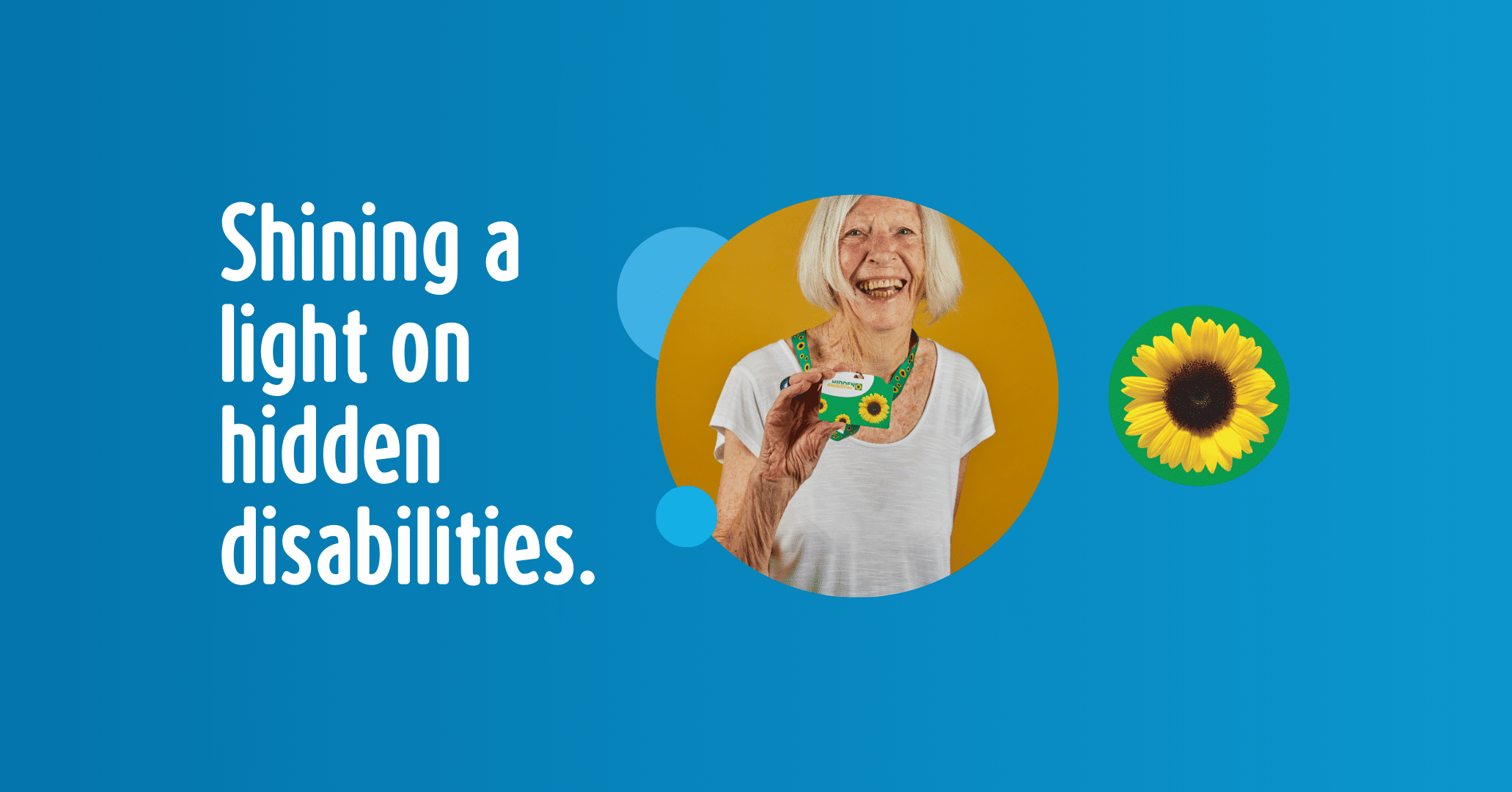Invisible disabilities are a lot more common than you might think. Of the 4.4 million people living with disabilities in Australia, 90% of them are living with an invisible disability. Hidden disabilities encompass a broad range of medical conditions that may affect a person’s physical, mental or cognitive well-being. With these high rates of hidden disability among Australians, there’s a good chance that someone you know falls into this category.
As an official Brisbane City Access and Inclusion Industry Champion, we take our responsibility to elevate the accessible travel experience seriously. In our latest endeavours to deliver high-impact accessibility improvements to passengers, we are the first transport company in Queensland to have adopted the Hidden Disabilities Sunflower scheme. Read on to learn more about the meaning behind this important initiative and the difference it will make for people living with invisible disabilities at Airtrain stations.
How invisible disabilities affect Australians
In Australia there are around 3.96 million people living with an invisible disability. Common types of invisible disability include chronic pain, autoimmune disease, mental illness, autism, epilepsy, dementia, and visual or hearing impairment.
Despite the prevalence of invisible disabilities, there is little public awareness of them. This is exacerbated by several common misconceptions about invisible disabilities, like “visible disabilities are more valid than invisible disabilities”, “people with invisible disabilities are lying or exaggerating” or “people with invisible disability should tell you that they have an invisible disability”.
Because invisible disabilities typically limit a person’s movements, senses and/or activities, there can be significant consequences as to how it impacts their day-to-day life. For example, a person living with an invisible disability may face challenges in meeting workplace responsibilities or feel vulnerable going to shopping centres or using public transport.
The Hidden Disabilities Sunflower scheme
The Hidden Disabilities Sunflower scheme exists to help those with disabilities that are not immediately obvious. The Hidden Disabilities Sunflower is a tool for people to voluntary share that they have a disability or condition that may not be immediately apparent, and that they may need more understanding, patience and assistance when going about their daily lives – including in public spaces and on transport.
Established in England in 2016, the Hidden Disabilities Sunflower scheme has been adopted globally across a range of industries and venues including health facilities, airports, train and bus stations, supermarkets, fitness and leisure facilities, as well as an increasing number of small and large businesses and organisations. You can use the Sunflower map to discover places that support people with invisible disabilities.
Airtrain’s support of invisible disabilities
At Airtrain we are committed to making travel accessible and enjoyable for all our passengers, including those with both visible and invisible disabilities. As a participant in the Hidden Disabilities Sunflower scheme, lanyards and wristbands bearing the sunflower logo are available to customers and colleagues with a hidden disability. This is a subtle way of letting Airtrain staff know of any support or adjustments that passengers may need. Airtrain staff have also been trained to identify the sunflower logo, gain a deeper understanding of invisible disabilities and learn how to support sunflower wearers.
If you don’t identify as someone living with an invisible disability, you can show your support by doing the following:
- encourage your workplace to join the Hidden Disabilities Sunflower network
- wear the Hidden Disabilities Sunflower “I support” lanyard or wristband
- incorporate the “I support” logo in your work email signature
- actively participate in awareness-raising initiatives such as Invisible Disabilities Week (October 20th to 26th), and
- speak openly and inclusively with family, friends and colleagues to create a safe space for those with a hidden disability.
Together, we can make the invisible visible.



